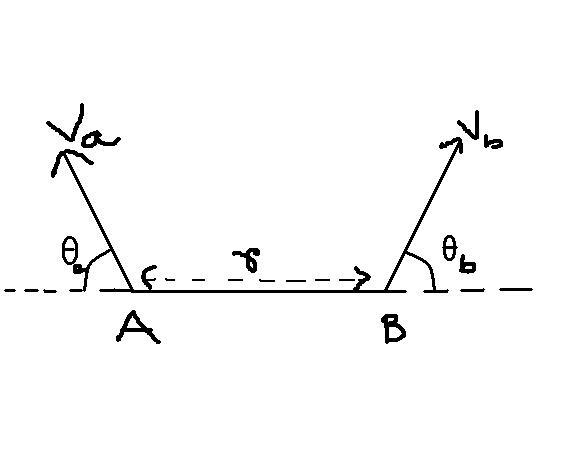sum 1 plz try.......
Two particles A & B are moving as shown in the figure. At this moment of time the angular speed of A w.r.t. B is

a)( va+vb)/r
b)( va-vb)/r
c)( vbsin \Thetab-vasin \Thetaa)/r in the anticlockwise direction
d)( vbsin \Thetab+vasin \Thetaa)/r in the anticlockwise direction
ans given is "c
-
UP 0 DOWN 0 0 4

4 Answers
Va= -vcosθ i+v sinθ j
Vb= +u cos α i + u sinα j
VAB= (-vcosθ-u cosα) i + (v sinθ-u sinα) j
ω = (v sinθ-u sinα)/r (since velocity along x-axis gives no angular velocity)
\vec{v}_{a,b}=\vec{v}_{a,g}-\vec{v}_{b,g} = \left(v_a-v_b \right)
So angualr velocity should be given by b).....pls point out my mistake if wrong.
put \theta _{b}=0 , \theta _{a}=\pi
then clearly ang vel = 0
hence options a,b are eliminated , and c,d are still dere
now put \theta _{b}= \theta _{a}=\frac{\pi }{2}
now
\upsilon _{a/b}= v_{a}-v_{b}
since they are in the same direction, eqn is true even for magnitude )
hence ang vel of A relative to B is simply \frac{\upsilon _{a/b}}{r}=\frac{ v_{a}-v_{b}}{r}
but this will be in the clockwise direction , hence in anticlockwise direction it will be \frac{ v_{b}-v_{a}}{r}
and out of c,d c gives correct ans
sorry for my nonconceptual method [4]but i really solved ds in 25 secs [3]